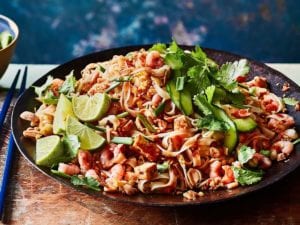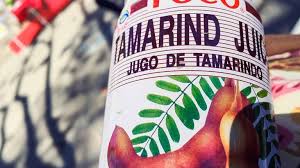
Take your tastebuds on a Hawaiian Vacation
Summer just got here, and this heat already has us dreaming of a sweet island getaway. That’s why this month we turned to the beautiful
Cart
No products in the cart.
NEW YEAR SALE ENDS IN
Spend $130, Save $15. Spend $170, Save $20. Spend $200, Save $30.

Pad Thai is one of the most simple and delicious street food dishes around. Rice noodles stir-fried with eggs and some tofu, shrimp or meat are the basis for the dish. It is typically flavored with some tamarind pulp, fish sauce, garlic, chili and sugar. Final touches include a garnish of lime wedge and chopped, toasted peanuts. It is probably the most famous Thai noodle dish, checking all the boxes for deliciousness – but why? What is the science behind its remarkable flavor?

The original name of Pad Thai is Gway Teow Pad Thai. Gway Teow is a Chinese word for rice noodles, which hints at a Chinese influence. Some people believe that a similar creation was brought to the Siamese Kingdom by Chinese Traders in the 1700s. The rest of the name offers even more clues… Pad means ‘fried’ and Thai of course, means from Thailand.
During World War II Thailand suffered a shortage of rice due to less production in the rice fields, which coincided with bad flooding. In order to preserve the stocks of this precious grain, the Thai government, under Prime Minister and Military Dictator, Plaek Phibunsonghram (‘Phibun’ for short) started to promote noodles instead amongst its people. Noodles used only 50% of the grain, so were more economical and cheaper to produce.

The government of Thailand created the dish ‘Pad Thai’, in a bid to protect the rice resources of the country. They told the general public that by eating the dish, they were helping their country. At the same time, ‘Phibun’ also wanted to improve the variety of the Thai diet, by encouraging people to eat noodles instead of rice, as well as promoting unity and a sense of national identity across the kingdom by creating a national dish that everyone would love. Some resources say that there was actually a national competition to create a national dish, and that Pad Thai was the winner

Although Pad Thai is well-known the fact remains that most national dishes are traditionally rice based. In fact, the dish bears more similarity to Chinese cuisine and it’s believed that the cooking of pan-fried noodles was widespread among Chinese immigrants in the country long before the cooking contest took place. On the other hand, Pad Thai actually uses thin sen chan rice noodles which are very similar to those used in the Vietnamese noodle dish pho, and few of the ingredients are native to Thailand. So, what does this make Pad Thai…Chinese, Thai or Vietnamese?

Pad Thai has many variations in recipe ingredients. But the backbone of the dish remains the same – rice noodle, eggs, tofu and dried shrimps. As for the all-important sauce, it consists of a balanced nuance of three tastes: saltiness from either fish sauce or soy sauce, sweetness from palm sugar, and sourness from tamarind juice. An authentic home-made sauce simmers the three aforementioned ingredients, while many traditional versions include shallots, garlic and dried chilis.

Ben Fisher from Mashed provides a few helpful hints for preparing this dish which can be tricky to get right if cooking from scratch.
There is a scientific reason why Pad Thai is so delicious. It follows a Thai culinary tradition of using all five tastes which are salty, sour, sweet, spicy and bitter. That is why the dish is so tantalizingly tasty!…It hits all five flavor profiles in the mouth!
Feeling tempted but not in the mood to cook? That’s why Flavorly have prepared our own version of this delicious dish! Hop over to our menu and order yours now!
https://southeastasiabackpacker.com/pad-thai-history-thailand/
https://www.theatlantic.com/international/archive/2014/04/non-thai-origins-of-pad-thai/360751/
https://www.thaipbsworld.com/the-origins-of-pad-thai/
https://www.gimmesomeoven.com/pad-thai/
https://tastesbetterfromscratch.com/pad-thai/
https://www.irvingyummythai.com/interesting-facts-about-pad-thai/

Summer just got here, and this heat already has us dreaming of a sweet island getaway. That’s why this month we turned to the beautiful

Check out how EatFlavorly utilizes Mexican meats and so many more in our scratch-made meals over at Our Menu! With Cinco de Mayo

National Earth day is approaching on Thursday April 22nd. Today, not only is Earth Day a day meant to increase awareness of environmental problems, but
The convenience of home meal delivery is undeniable. Getting food delivered to your door that does not require cooking or cleaning is a huge time-saver.